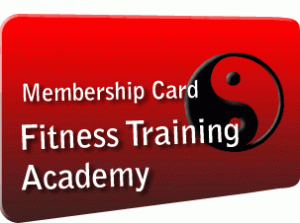So are YOU a Fitness Role Model?
by admin
Filed under Articles and Interviews, Fitness Instructor
Having been a presenter for such a long time, I have learnt that the very people that one minute will be asking you to perform your latest masterpiece again and again one minute, will quite happily make not so nice comments about you as soon as you step off the stage. I suppose that if we make the choice to put ourselves in front of other professionals, we should then be prepared for that. We are seen by many fitness instructors as “role models” as people to aspire to and learn from. But what does being a role model mean anyway?
I know that some professionals I look up to in the industry inspire me because of their knowledge, their passion, their uniqueness or just their sense of humour. Aesthetics for me doesn’t have anything to do with it. But whenever I have presented abroad, especially in Italy, Spain and Portugal, the local presenters there do seem to have to pass a 0% bodyfat test before they even get onto the stage. Once on there they can be as crap as anything, but as long as they look good that is the main thing, sort of.
A recent incident has brought to light to me that different people view a role model in different ways
Recently I sold an ecourse called “my Conditioning Secrets Revealed”. The reason that I used that title was that I had the great pleasure with working with an Excellent Personal Trainer, Kelly Lane, who had served an apprentiship with American Guru Alwyn Cosgrove.
I managed to transfer the exercises that she put me through into the group exercise format and so my classes were always popular, for the exercises that I put in and the way that I structured the sessions. That has always been the aim of my masterclasses; to provide something different, innovative and inspire instructors to think differently about how they create their sessions. That was my interpretation of being a role model
However one instructor on my mailing list seemed to have a different view. Now I am not sure what she was trying to do, but I think that she was aiming to forward my email advertising my course to her friend, but instead ended up replying to me! So there I was minding my own business when this email popped up into my inbox;
“A bit cruel i know but had to laugh at the words “My conditioning secerts” . So now we know how he keeps soooooo trim!….we’ll we would if we were to purchase the script…..Not”
She then went on to continue the email thinking that it was her fellow instructor reading this email when in fact it was me, but I think you get the point.
So, you may be asking how I felt. Well obviously it didn’t make my day, but luckily I could see the funny side of it. I knew the instructor in question and she had been to many of my classes, including my conditioning sessions for many years. She is entitled to her opinion and to be honest to a certain degree she does have a point.
Many of us would admit that the appearance of the instructor in front of a group does make a difference, initially. There are some training systems that specifically choose their master trainers based on their appearance. In fact when I was presenting in Hong Kong, there was an advert in one of the gyms for members to get trained in this Training System “ No teaching experience necessary, as long as you look the part” So I can appreciate that view point.
It is no secret that I have struggled personally with my weight for most of my adult life, which seems strange that I have chosen to continually put myself in the presenting spotlight. Plus I came into the industry at a time when it seemed that many male presenters were getting their kit off to wow the crowds rather than just being good at what they do (it’s a shame the female presenters didn’t do the same, but hey ho!)
So I tried to overcompensate for that by really trying to be the best presenter I could be. If I wasn’t going to get an encore for getting my kit off, I wanted to get one for just teaching a good masterclass! I must have done something right because I managed to present internationally for a long time, and, I think, earnt the respect of presenters, instructors and fitness enthusiasts alike.
So what can we take from this little episode in my life? Well firstly be very careful who you email, as it could get into the wrong hands!! But the main one I suppose is to work out what being a role model means to you, and create your life and business based around that. It may not fit in with other’s perceptions but you can only be true to yourself.
Those of you that know us presenters know that we are just normal people, with normal lives, with the same hang ups as everyone else. We have just been lucky to chosen to take our instructing to a bigger audience
Just so you know, the instructor and I have since “made up” and it is all water under the bridge. But I bet she double checks her emails now though!!










